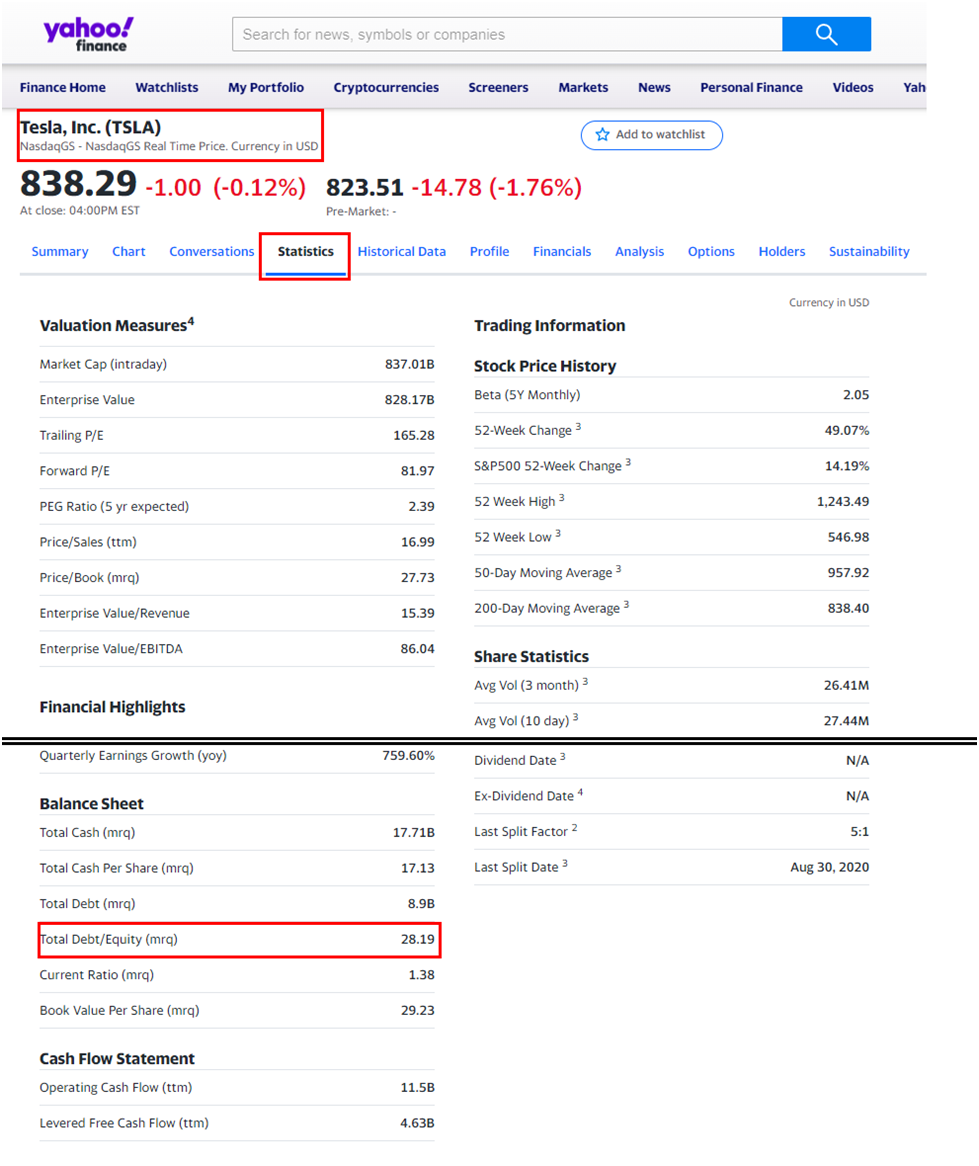We have already covered the debt/equity ratio formula in detail before. However, you should also know what it is and how to use it. In this article, we will discuss this ratio with the help of concrete examples.
What is the Debt/Equity Ratio?
The debt/equity ratio compares the different elements of a company’s capital structure. It shows you how much debt a company has compared to its equity finance. Essentially, it is a measure of financial leverage. The debt/equity ratio is a metric you can calculate using only the balance sheet.
The debt/equity ratio is a type of gearing ratio. It helps you determine whether a company has enough equity to cover its outstanding debts. For established companies, a high debt/equity ratio doesn’t matter. However, if a company suffers a business downturn, it can become critical.
Why do we use the Debt/Equity Ratio?
We use the debt/equity ratio to determine how much a company relies on debt for financing needs. On top of that, it also shows the contrast between debt and equity finance for that company. You can use the debt/equity ratio to avoid investing in companies with significant debt.
The debt/equity ratio is also vital when companies obtain finance from other sources. Usually, creditors consider this ratio before providing funds to a company. If this ratio is high, companies will face challenges when obtaining further finance for activities.
How to use the Debt/Equity Ratio?
You can calculate the debt/equity ratio for various companies on your own. Usually, all you need is the balance sheet for those companies. Once you have it, you can use the following debt/equity ratio formula to calculate this ratio.
Debt/Equity Ratio = Total Liabilities / Total Shareholders’ Equity
A low debt/equity ratio is the best for investments. However, you must know the industry average as well. On top of that, it is crucial to compare this ratio with other similar companies. On its own, the debt/equity ratio may not provide sufficient information.
Where to use the Debt/Equity Ratio?
We recommend using the debt/equity ratio when evaluating various companies for investments. More specifically, you should utilize this ratio to gauge the risks for a company. As stated above, the higher this ratio is, the higher your risks associated with the investment will be.
It is also better to use the debt/equity ratio comparatively. Several factors may determine how much this ratio will be for a company. However, if you compare it with the industry average or similar companies, you will get a better idea. The debt/equity ratio should be a part of your initial process to select investments.
Example
The debt/equity ratio is a balance sheet metric. You can also obtain it from other sources, such as Yahoo Finance. For that, you will need to search the company you are considering first.
Once you search the company, you can find its debt/equity ratio under the “Statistics” tab. There, this ratio appears under the “Balance Sheet” section. For example, the debt/equity ratio for Tesla at the time of this article on Yahoo Finance is as follows.

Please note that the debt/equity ratio on Yahoo Finance is for the most recent quarter (mrq).
Conclusion
The debt/equity ratio is a measure of financial leverage for a company. You can use this ratio to determine how much a company relies on debt for its operations. Similarly, it helps you gauge the risks associated with an investment.
Further questions
What's your question? Ask it in the discussion forum
Have an answer to the questions below? Post it here or in the forum




